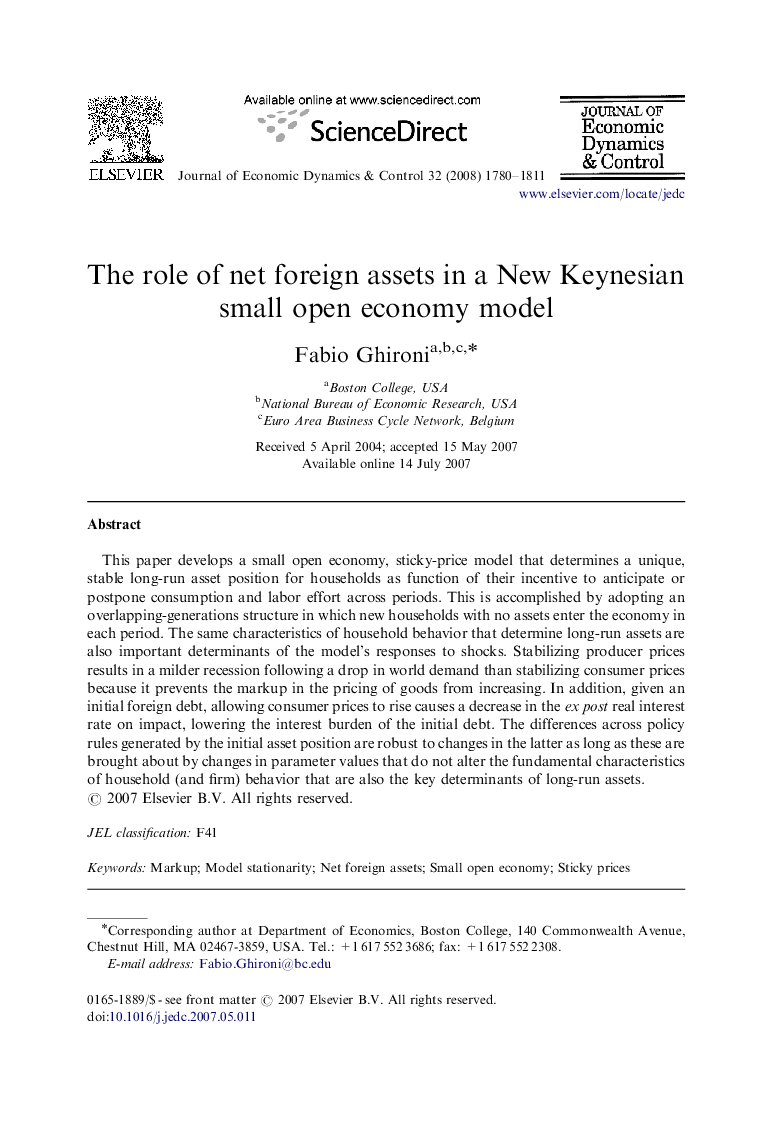| Article ID | Journal | Published Year | Pages | File Type |
|---|---|---|---|---|
| 5099326 | Journal of Economic Dynamics and Control | 2008 | 32 Pages |
Abstract
This paper develops a small open economy, sticky-price model that determines a unique, stable long-run asset position for households as function of their incentive to anticipate or postpone consumption and labor effort across periods. This is accomplished by adopting an overlapping-generations structure in which new households with no assets enter the economy in each period. The same characteristics of household behavior that determine long-run assets are also important determinants of the model's responses to shocks. Stabilizing producer prices results in a milder recession following a drop in world demand than stabilizing consumer prices because it prevents the markup in the pricing of goods from increasing. In addition, given an initial foreign debt, allowing consumer prices to rise causes a decrease in the ex post real interest rate on impact, lowering the interest burden of the initial debt. The differences across policy rules generated by the initial asset position are robust to changes in the latter as long as these are brought about by changes in parameter values that do not alter the fundamental characteristics of household (and firm) behavior that are also the key determinants of long-run assets.
Related Topics
Physical Sciences and Engineering
Mathematics
Control and Optimization
Authors
Fabio Ghironi,
